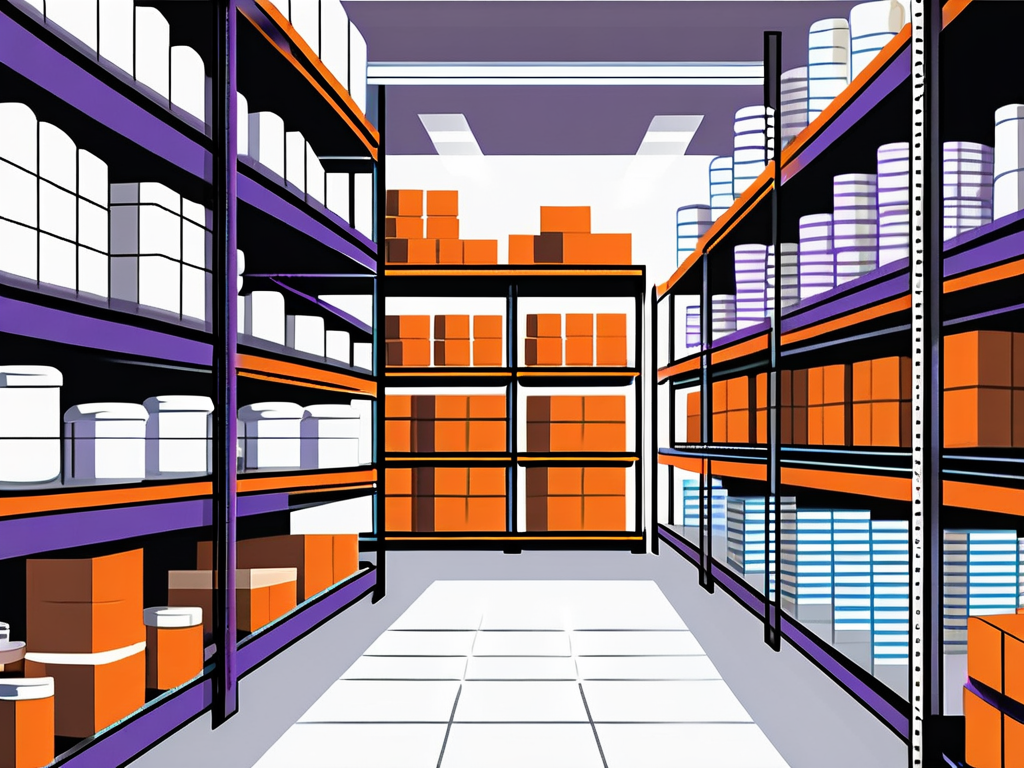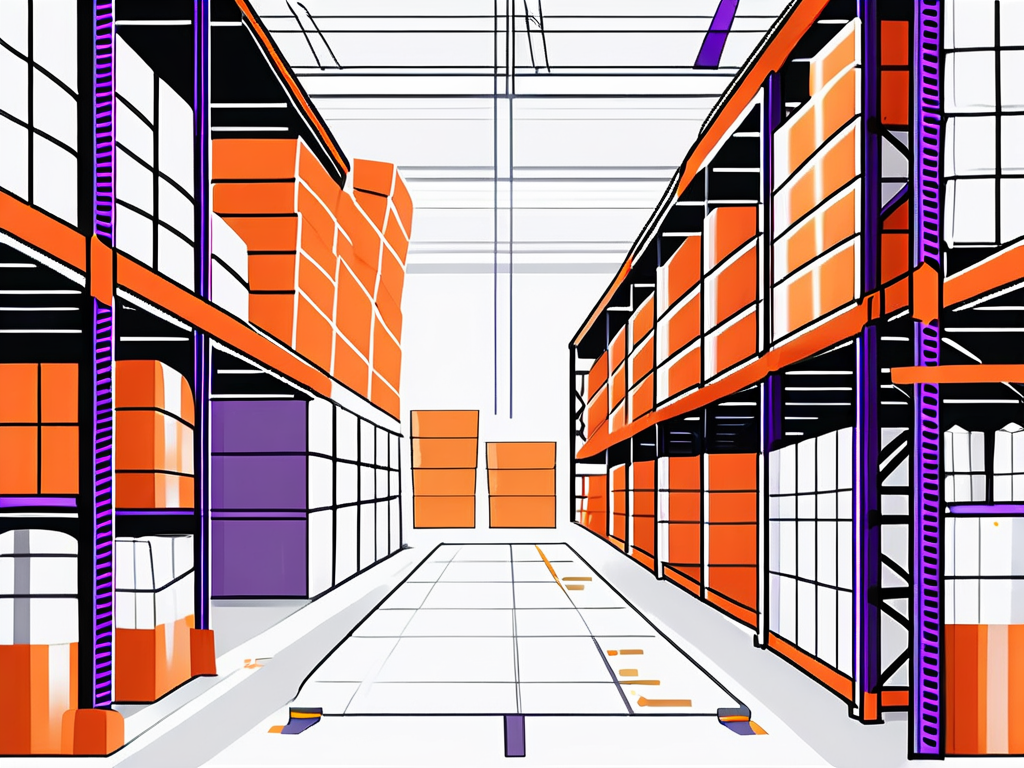“Quality is never an accident; it is always the result of intelligent effort.” – John Ruskin.
GMP, or Good Manufacturing Practices, are a set of guidelines and regulations that ensure the safety, quality, and consistency of products in various industries, including warehousing. In this article, we will delve into the GMP rules specifically designed for warehouses, their importance, implementation strategies, and the impact they have on warehouse operations.
Table of Contents
ToggleGMP Rules for a Warehouse 101
GMP, or Good Manufacturing Practices, are a set of principles and guidelines established by regulatory agencies such as the U.S. Food and Drug Administration (FDA). These rules are tailored to different industries, outlining the procedures and protocols necessary to maintain product quality and safety.
Compliance with GMP is not only a regulatory requirement but also a fundamental aspect of ensuring consumer safety and trust. By following GMP guidelines, companies can demonstrate their commitment to producing high-quality products that meet stringent standards. For businesses looking to streamline their supply chain while maintaining compliance, 3PL services in the USA can provide efficient inventory management and fulfillment solutions.
Importance of GMP in Warehousing
Warehouses play a crucial role in the supply chain, storing and distributing various products before they reach the hands of consumers. For seamless order processing and compliance, businesses can benefit from warehouse fulfillment services to maintain efficiency and inventory accuracy.

Adhering to GMP rules in warehousing ensures that products are handled and stored in a manner that minimizes contamination risks and maximizes their quality and efficacy.
Implementing GMP in warehousing involves maintaining proper storage conditions, such as temperature and humidity controls, to prevent product degradation. Additionally, staff training on GMP protocols is essential to ensure that handling procedures are followed meticulously, reducing the likelihood of errors or contamination incidents.
Key GMP Regulations for Warehouses
While there are several GMP regulations in force, we wanted to discuss 3 of the most important ones that relate to warehouses, so let’s jump into it.
1. Storage and Distribution
Proper storage and distribution practices are at the core of GMP rules for warehouses. Companies looking to enhance efficiency can explore inventory management solutions to ensure product integrity and minimize errors. This includes:
- maintaining suitable temperature and humidity conditions
- organizing storage areas to prevent cross-contamination
- implementing efficient inventory management systems to minimize errors and product mix-ups
Furthermore, it is crucial for warehouses to have designated storage areas for different types of products based on their specific requirements.
For example, storing temperature-sensitive items should be done in climate-controlled zones to maintain their integrity and efficacy. Proper labeling and segregation of products are also essential to avoid mix-ups and ensure accurate tracking of inventory levels.
2. Pest Control Measures
Pests have no place in a warehouse, and GMP rules emphasize the implementation of robust pest control measures. This involves:
- regular inspection
- proper sanitation
- the use of appropriate pest control products to prevent infestations
In addition to routine pest control measures, warehouses should also focus on identifying and addressing potential entry points for pests. This includes sealing cracks and crevices, maintaining cleanliness both inside and outside the facility, and implementing monitoring systems to detect any signs of pest activity promptly.
By taking a proactive approach to pest control, warehouses can safeguard their products and maintain compliance with GMP regulations.
3. Personnel Hygiene and Training
Human factors can significantly impact product quality, making personnel hygiene and training key aspects of GMP rules in warehouses.
Employees must follow strict personal hygiene practices, such as proper handwashing and wearing appropriate protective clothing, to prevent any potential contamination. Additionally, comprehensive training programs should be in place to ensure employees are aware of GMP requirements and understand their role in maintaining product quality and safety.
Moreover, regular audits and assessments of personnel hygiene practices can help identify areas for warehouse improvement and ensure ongoing compliance with GMP standards. By fostering a culture of cleanliness and adherence to hygiene protocols, warehouses can mitigate risks associated with human error and uphold the integrity of their stored products.
Implementing GMP in Your Warehouse
Good Manufacturing Practices (GMP) play a vital role in ensuring the quality and safety of products in warehouse operations.
Developing a GMP program tailored to the specific needs of your warehouse is essential for maintaining high standards and compliance with regulations. In addition to outlining standard operating procedures, a robust GMP program should also encompass training programs for staff to ensure understanding and adherence to GMP guidelines.

Developing a GMP Program
To implement GMP effectively, warehouses must develop a comprehensive GMP program tailored to their specific operations.
This program should:
- outline standard operating procedures
- define responsibilities and accountabilities
- establish a system for ongoing monitoring and continuous improvement
Regular training sessions and refresher courses can further reinforce the importance of GMP practices among warehouse staff, fostering a culture of quality and compliance.
Regular Audits and Inspections
A crucial aspect of GMP implementation in warehouses is conducting regular audits and inspections.
These assessments help identify areas of non-compliance, ensure adherence to GMP principles, and provide opportunities for corrective actions and process optimization. In addition, third-party audits can provide an unbiased evaluation of a warehouse’s GMP compliance and offer valuable insights for improvement.
Implementing a robust internal auditing system can help warehouses stay proactive in addressing any GMP-related issues and continuously improve their processes.
Challenges in Adhering to GMP Rules
Ensuring compliance with Good Manufacturing Practices (GMP) rules is crucial for maintaining the quality and safety of products in warehouses. However, this task is not without its challenges.
Warehouses often face common compliance issues that can hinder their adherence to GMP rules. These challenges include:
- Inadequate employee training, where staff may not be fully equipped with the knowledge and skills required to follow GMP guidelines effectively.
- Incomplete documentation is another issue that warehouses encounter, as proper record-keeping is essential for demonstrating compliance with GMP standards.
- Moreover, inconsistent implementation of standard operating procedures can lead to deviations from GMP requirements, highlighting the importance of uniformity in processes.
Common Compliance Issues
Despite their importance, adhering to GMP rules in warehouses can present challenges. Common compliance issues include inadequate employee training, incomplete documentation, and inconsistent implementation of standard operating procedures. Addressing these challenges requires a proactive approach and a commitment to continuous improvement.
Overcoming GMP Implementation Obstacles
Overcoming obstacles in GMP implementation starts with identifying the root causes of non-compliance.
By conducting thorough assessments and engaging employees at all levels, warehouses can effectively address obstacles such as:
- resistance to change
- lack of resources
- a culture that does not prioritize quality
Additionally, fostering a culture of open communication and continuous learning can help ensure everyone is aligned with GMP goals.
Start Implementing GMP Best Practices
When warehouses implement GMP best practices, they not only ensure compliance with regulations but also set a benchmark for operational excellence.
This includes regular training sessions for employees on GMP principles, conducting thorough inspections of storage areas, and maintaining detailed records of all processes.
By investing in these practices, warehouses can proactively identify and address any potential issues before they escalate, thus maintaining a high level of quality and efficiency. For businesses looking to optimize their fulfillment and logistics operations, Fulfyld provides expert solutions to streamline processes and enhance efficiency.

![How Comedian Ellen Skrmetti Reclaimed Her Time with Fulfyld’s Local Fulfillment Solution [Case Study]](https://img.fulfyld.com/cdn-cgi/imagedelivery/LhwpGZtkAL7sOMr5mtwT5A/www.fulfyld.com/2025/04/unnamed-5.png/w=150,h=150,fit=crop)
![How Nicole’s Best Gluten Free Flour Found Their Perfect Fulfillment Match with Fulfyld [Case Study]](https://img.fulfyld.com/cdn-cgi/imagedelivery/LhwpGZtkAL7sOMr5mtwT5A/www.fulfyld.com/2025/04/unnamed-4.png/w=150,h=150,fit=crop)
![How Sonia Roselli Beauty Maintained Premium Standards Through Long-Term Partnership with Fulfyld [Case Study]](https://img.fulfyld.com/cdn-cgi/imagedelivery/LhwpGZtkAL7sOMr5mtwT5A/www.fulfyld.com/2025/04/unnamed-3.png/w=150,h=150,fit=crop)
![How Daily Grind Planner Transformed Their Customer Experience by Partnering with Fulfyld [Case Study]](https://img.fulfyld.com/cdn-cgi/imagedelivery/LhwpGZtkAL7sOMr5mtwT5A/www.fulfyld.com/2025/04/unnamed-2.png/w=150,h=150,fit=crop)
![How Pine Company Wearables Reclaimed Their Time by Outsourcing Fulfillment to Fulfyld [Case Study]](https://img.fulfyld.com/cdn-cgi/imagedelivery/LhwpGZtkAL7sOMr5mtwT5A/www.fulfyld.com/2025/04/unnamed-1.png/w=150,h=150,fit=crop)
